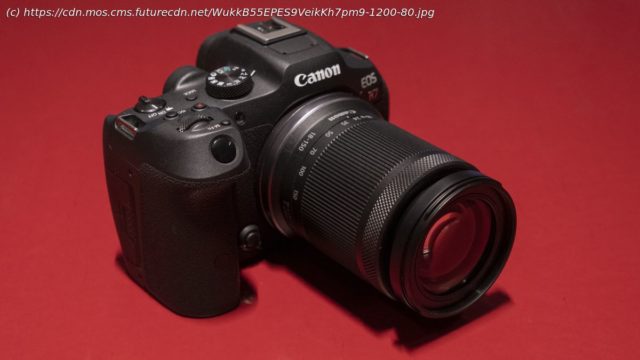The Canon EOS R7 is the camera giant’s new flagship APS-C camera. Does it live up to that billing? Find out in our hands-on Canon EOS R7 review.
The Canon EOS R7 is, on paper, the mirrorless camera that amateur photographers have been waiting for. It’s a mid-range camera with some high-end specs – and like the EOS R10 it’s launched alongside, the EOS R7 is built around an APS-C sensor. While these can’t gather as much light as the full-frame sensors seen in cameras like the Canon EOS R6, but they do bring a few benefits – including lower price tags. If you’re a keen photographer who likes shooting wildlife and sports, the EOS R7 could be the camera for you. Sitting in between classic DSLRs like the Canon EOS EOS 7D Mark II and 90D, it combines Canon’s latest Dual Pixel CMOS AF II autofocus system with speedy 15fps burst-shooting speeds (or even 30fps with its electronic shutter). For its price, the EOS R7 delivers an impressive list of features that show why it’s Canon’s new flagship APS-C camera. Unlike the EOS 90D, you get in-body image stabilization (IBIS), which is helpful for preserving image quality while shooting handheld. Canon says this provides up to eight stops of compensation, allowing you to use slower shutter speeds (and lower ISOs) in low-light situations. You also get two UHS-II card slots and a solid range of video-shooting specs, including headphone and microphone inputs, plus the ability to shoot uncropped 4K/60p video. In theory, then, the Canon EOS R7 is the all-rounder that’s been missing from Canon’s mirrorless lineup. But does Canon’s new APS-C flagship live up to its spec sheet in the real world? And what’s the situation with lenses? Check out our hands-on Canon EOS R7 review below for the answers, plus our early thoughts on this long-awaited camera. The Canon EOS R7 is available for pre-order today ahead of shipping in June. The EOS R7 costs $1,499 / £1,349 / AU$2,349 (body only) or $1,899 / £1,699 / AU$2,899 with its new RF-S 18-150mm kit lens. Considering the camera’s specs, that’s pretty good value and largely in line with its spiritual predecessors. When it launched in 2019, the Canon EOS 90D cost $1,199 / £1,210 / AU$1,959 (body only). But it lacked advanced features like in-body image stabilization and an electronic viewfinder, which you get on the EOS R7. You can currently still buy the full-frame Canon EOS RP for only $999 / £1,049 / AU$1,769. But despite its larger sensor, that camera is based on much older tech like Canon’s Digic 8 processor, which significantly inhibits its autofocus and video performance. It’s possible that Canon will launch successors for its entry-level full-frame cameras, but right now the EOS R7 (and EOS R10) are the best routes into its EOS R system for hobbyists shooters. For a limited time, Canon is also bundling its EF-EOS R adapter with the EOS R7 in some regions, for no extra cost. The Canon EOS R7 is a small, lightweight mirrorless camera that has echoes of both the EOS R6 and older EOS R. In our brief time with the camera, we’d say it successfully combines portability, intuitive controls and a comfortably deep grip in a way that’ll prove popular with hobbyist photographers. Perhaps the only big missing design feature that we’ve seen on previous Canon cameras is a top-plate LCD. In the absence of dedicated dials for settings like shutter speed, we’ve previously found those LCDs to be a handy way to quickly check settings. Still, the pricier EOS R6 also lacks this feature, and the decision no doubt helps keep the cost and complexity of the EOS R7 down. The EOS R7’s top-plate reminds us of the full-frame EOS R6 in others ways, too. Its mode dial is sensibly placed to the right of the viewfinder, while the grip is home to the shutter button, front dial (for tweaking aperture or shutter speed), a multi-function button, and a video record button. There are a couple of big differences from the EOS R6, though. Firstly, the EOS R7 actually inherits the more advanced hot-shoe seen on the professional Canon EOS R3. This can both power and transfer data between the camera and accessories like flashes and microphones, which helps reduce cut down on cables and clutter. In a new design tweak, Canon has also combined the camera’s AF joystick and control wheel. This might require some Canon photographers to rewire their muscle memory, but we got used to the wheel’s new home fairly quickly.






